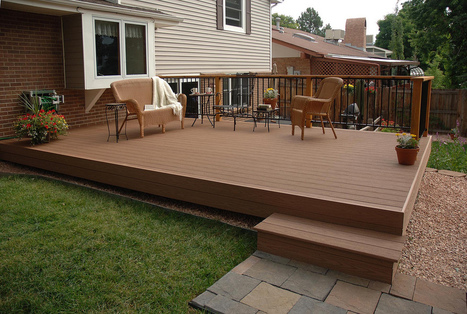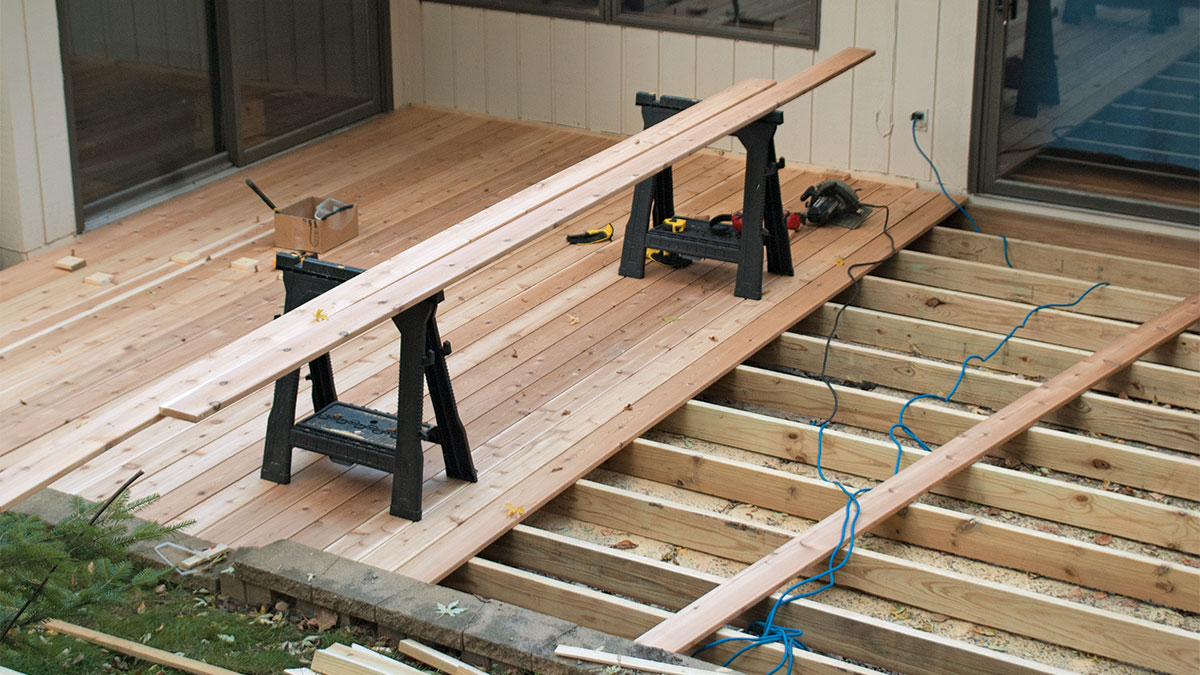Planning your outdoor upgrade? Start by finding the right team for deck installation Austin TX.
Planning your outdoor upgrade? Start by finding the right team for deck installation Austin TX.
Blog Article
Just how to Select the Right Materials for Your Deck Installation Project
Choosing the suitable materials for your deck installment project can appear challenging. There are countless variables to take into consideration, from longevity and upkeep to appearances and environmental influence. The selection between standard wood and composite materials, each with its very own set of benefits and drawbacks, can be specifically challenging. The secret is to balance your budget, layout choices, and way of living needs to create a deck that will enhance your outside room for several years ahead.
Understanding the Various Sorts Of Deck Products
When starting a deck setup project, the option of products comes to be a critical decision. Different choices are available, each with one-of-a-kind qualities and aesthetic allure. Standard wood, for instance, offers a timeless, natural look and is commonly much more affordable. It can warp over time and requires normal maintenance. Compound materials, on the various other hand, are a mix of wood and plastic, offering longevity and resistance to weather elements. They require less maintenance compared to wood yet are generally more costly. Another choice is vinyl, which is practically maintenance-free and resistant to pests and rot, albeit less natural-looking. By comprehending these distinctions, property owners can make an extra educated choice on one of the most appropriate deck product for their particular demands.
Evaluating the Longevity and Upkeep Demands of Deck Materials
Evaluating the longevity and upkeep demands of deck materials is a critical step in deck installation. Durability involves the product's capacity to endure harsh climate condition, deterioration, and its longevity. Cedar and redwood are naturally immune to rot and bugs, making them sturdy options. On the various other hand, pressure-treated timber, while long lasting, may call for even more upkeep because of its susceptibility to splitting and buckling.
Comprehending upkeep needs is just as vital. Some materials need regular securing or tarnishing to maintain their look and resist moisture damage, while others, like composite decking, require less upkeep. By examining these factors, one can select the most ideal decking material, ensuring a balance in between resilience, maintenance demands, and aesthetic appeal.
Price Evaluation: Contrasting Timber and Composite Decking
Although cost might initially look like a secondary problem, it is a considerable element when comparing wood and composite outdoor decking. Timber, generally a much less expensive alternative, has a lower ahead of time cost. However, gradually, upkeep expenditures can accumulate, possibly making timber more pricey in the future. These upkeep expenses might consist of staining, securing, or replacing damaged boards. On the other hand, composite outdoor decking, while costlier initially, requires much less upkeep, potentially lowering long-term prices. It's essential to remember that composite decking isn't invulnerable to put on and tear, and substitute prices can be high. Possible deck proprietors must consider their spending plan and readiness to preserve their decks when determining in between timber and composite decking.
Visual Appeals and Design Versatility of Decking Products
All-natural timber outdoor decking offers a traditional, timeless look, while composite products provide a vast array of shades and appearances to match diverse tastes and styles. Compound materials, while much less adaptable in style, are still versatile enough for many deck layouts. These variables, therefore, are essential components in the option of outdoor decking material.
Ecological Influence of Decking Products
When picking outdoor decking products, one must take into consideration not just appearances and durability, yet additionally the ecological influence. It's vital to examine the sustainability of products and explore recycled decking alternatives. Additionally, recognizing the possible web influence on local communities will certainly make sure a much more eco accountable option.
Analyzing Product Sustainability
In the world of deck building, analyzing product sustainability is an important step. This entails assessing the ecological impact of each possible material, thinking about variables such as the energy needed for its manufacturing, its carbon footprint, and its end-of-life disposal or recycling choices. For instance, wood is a renewable energy, however unsustainable logging methods can cause deforestation. Composite decking materials usually incorporate timber and plastic, minimizing the need for brand-new hardwood yet increasing reliance on fossil fuels. Aluminum and various other steels may be a lot more durable and recyclable, yet their removal and handling can be energy-intensive. Thus, the selection of outdoor decking products should balance performance, aesthetic appeals, expense, and sustainability to make sure a liable and long-lasting setup.
Recycled Outdoor Decking Alternatives

Compound outdoor decking is especially preferred due to its longevity and convenience of maintenance. Recycled plastic outdoor decking, on the various other hand, is extremely resistant and calls for marginal upkeep.

Influence On Local Communities
While the benefits of using recycled products for outdoor decking can not be overstated, it's just as important to consider the broader environmental effects of these options. Proper disposal of old decking is essential to minimizing land fill waste. Essentially, an eco-conscious deck job demands mindful product choice, lasting sourcing, and accountable disposal.
Making Your Decision: Tips for Choosing the very best Deck Products
As the article shifts into the subtopic of "Making Your Last Choice: Tips for Picking the most effective Deck Products", it is crucial to comprehend the selection of deck materials readily available. Striking a balance in between durability and looks is important in this choice procedure. The following conversation will certainly direct readers in making an enlightened option based upon these vital factors to consider.
Comprehending Different Deck Materials
The job of choosing the right products for your deck installment can seem daunting due to the large range of options available. Plastic or PVC decks are also much more durable and need less upkeep than composite products, but they can look much less natural. Light weight aluminum decks are strong, light-weight, and immune to rot, but they are likewise the most pricey choice.
Sturdiness vs. Looks Balance
Balancing resilience with aesthetic appeals can be a challenge when picking deck products. The decision usually steams down to individual choices and the deck's intended usage. High-traffic areas might require sturdy materials like composite decking, which stands up to deterioration but might lack the all-natural charm of timber. On the other hand, timber Source provides a classic charm and heat that synthetic materials struggle to reproduce. Nevertheless, it calls for much more upkeep and might not last as long. Homeowners need to strike an equilibrium, considering both the deck's functional demands and their aesthetic choices. By doing so, they can ensure their deck continues to be a functional and appealing exterior space for many years to click this site find.
Verdict
Finally, selecting the best materials for your deck installment task calls for mindful consideration of factors such as durability, upkeep, expense, visual appeals, and environmental impact. Whether you go with typical wood or composite products, your choice should straighten with your budget, layout choices, and way of life. Ultimately, the best outdoor decking product is one that improves your outside space and provides pleasure for years ahead.
Report this page